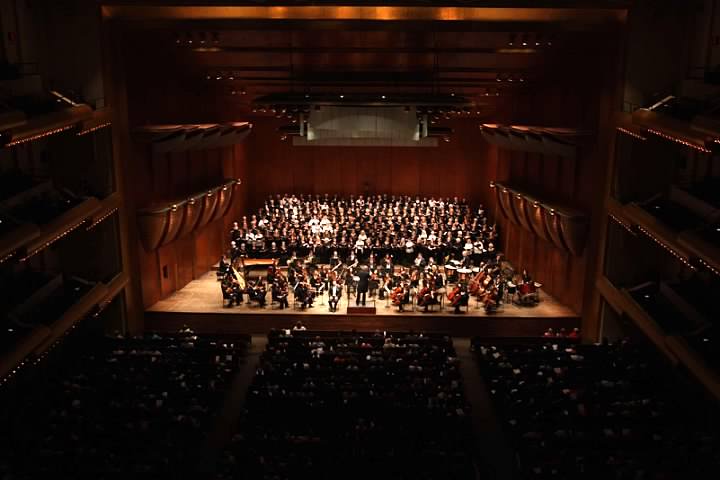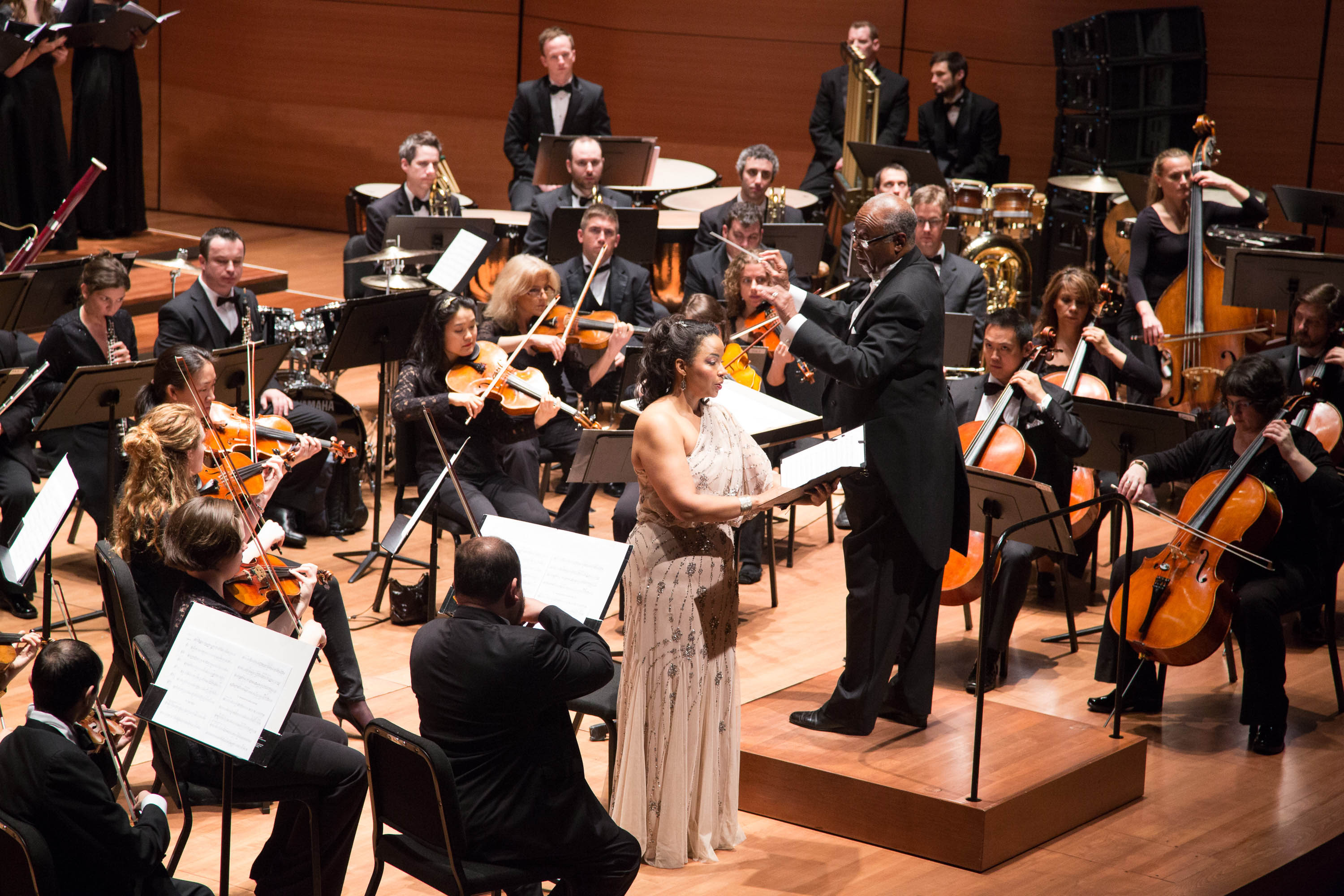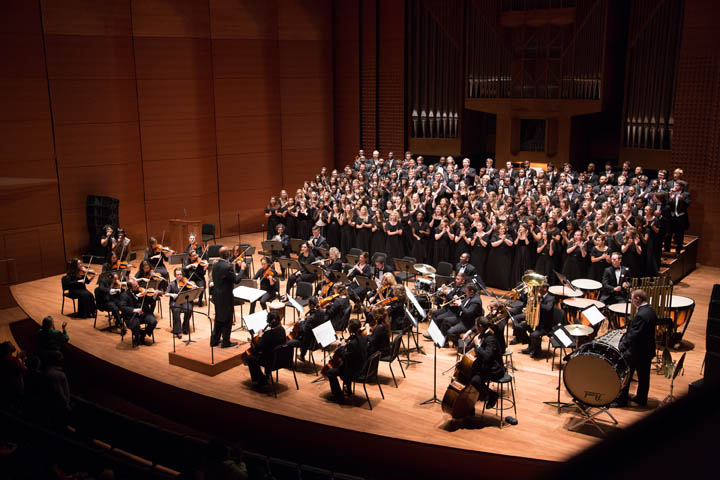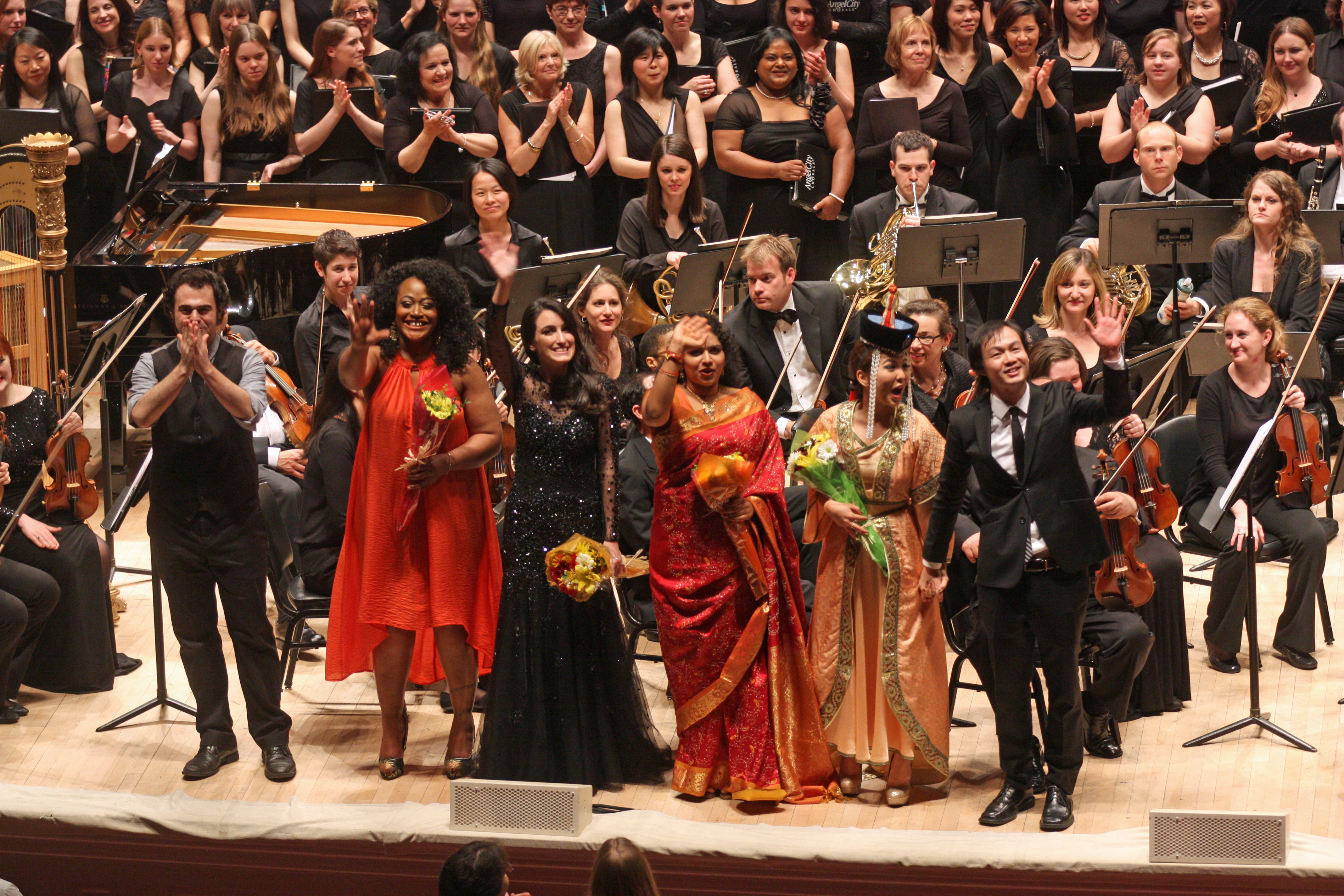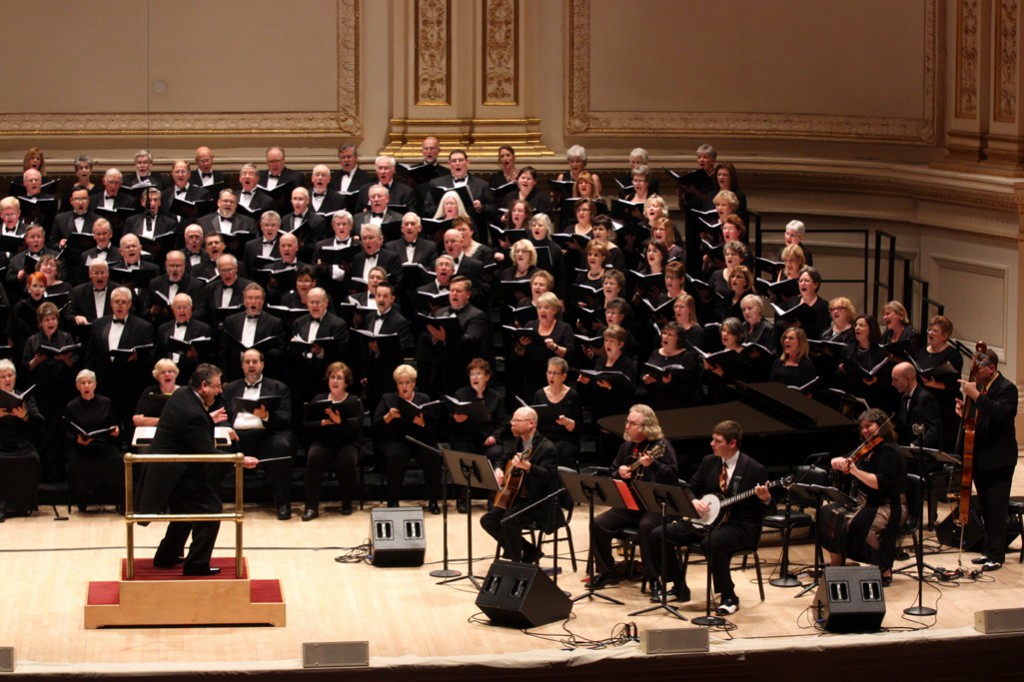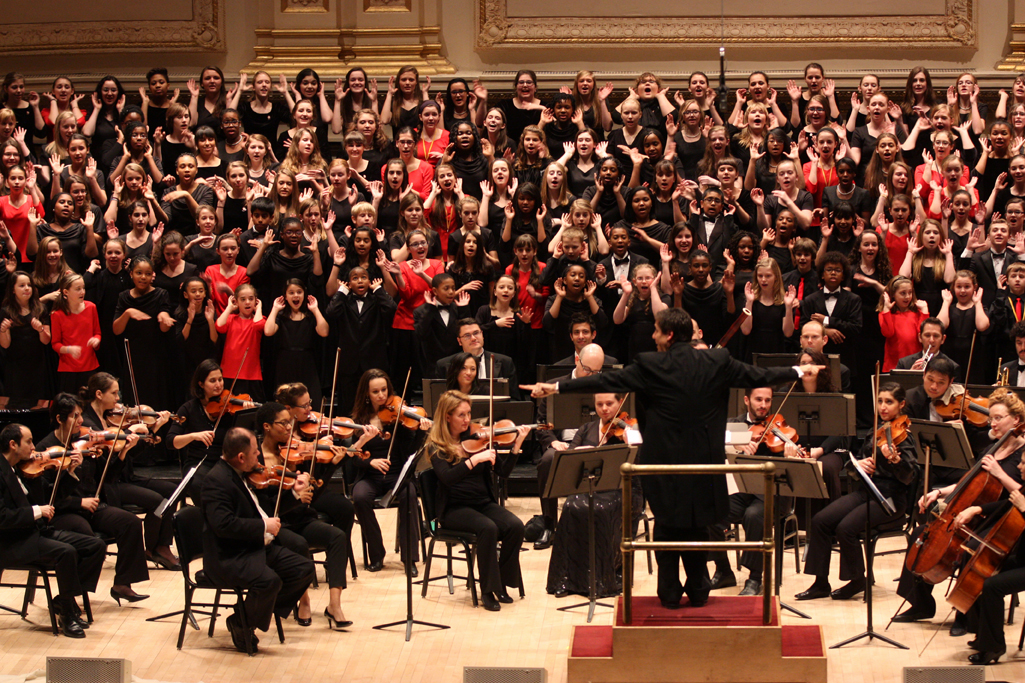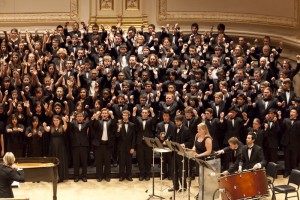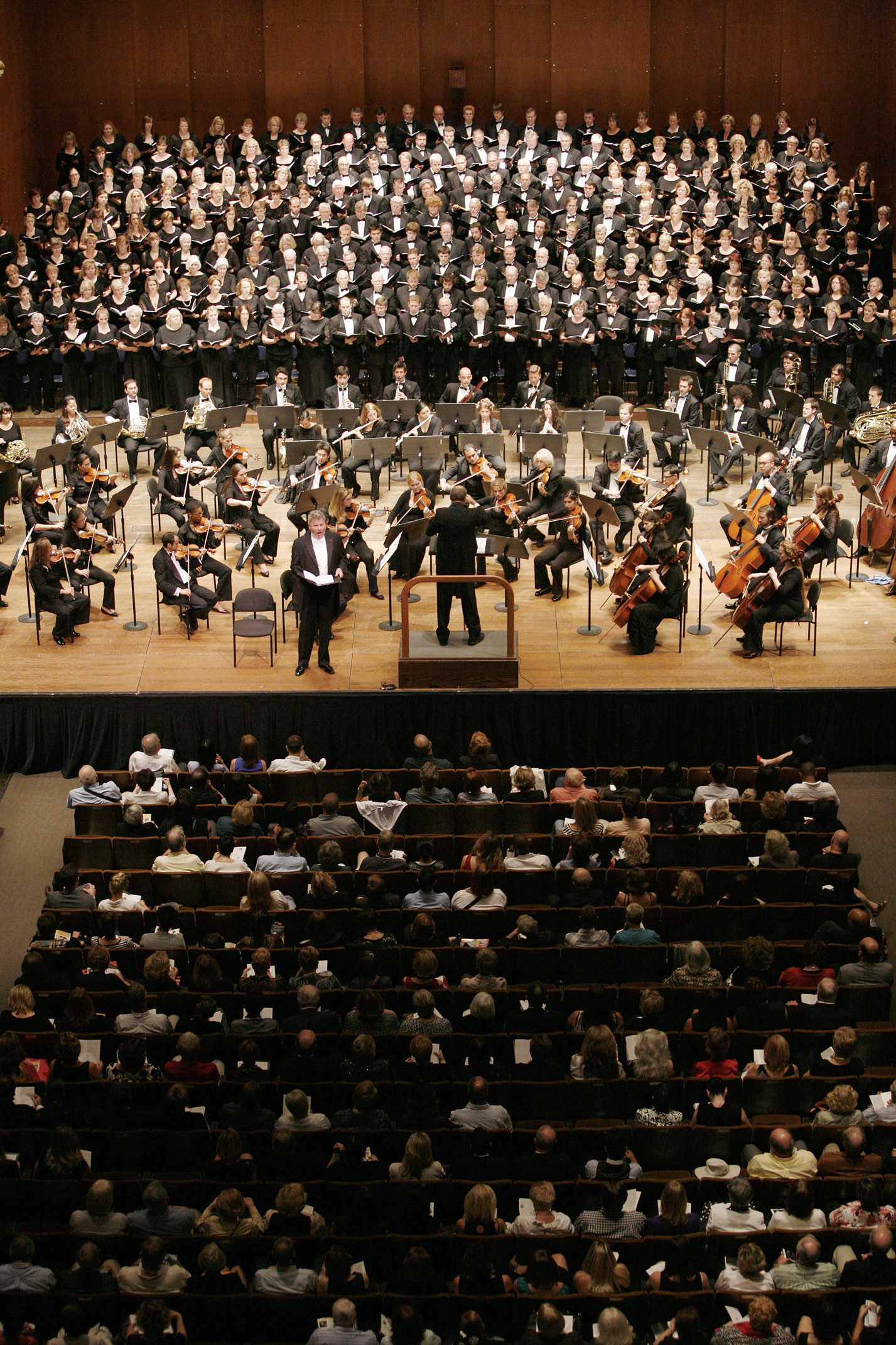Memorial Day is a time for reflection and to give our thanks to all the men and women who gave their lives so we can enjoy the liberty that their sacrifices made possible. Distinguished Concerts International New York (DCINY) presented a two- part concert series entitled “Celebration and Reflection” to commemorate those heroes. Avery Fisher Hall was the venue for Part One, the first half of the program being Mozart’s “Coronation“ Mass, and second half, the World Premiere of Star Song, by Bradley Ellingboe.
The Patriot Brass ensemble returned again this year and entertained the audience members as they entered the hall with a pre-concert selection of marches, popular tunes, and Americana. As the chorus members from Iowa and Kansas (and “individuals around the globe”) filled onto the stage, the mood was set for a festive evening.
Mozart’s Mass in C major is called “Coronation” because it is believed that this work was performed at a coronation in Prague. Some claim it was used for the coronation of Leopold II in 1791, while others state it was used for Franz II in 1792. In any case, written in 1779, the Coronation Mass remains fresh and vital 225 years later, another testament to Mozart’s genius.
Conductor Aimee-Beckmann-Collier took to the podium, and it was apparent from the start that the chorus, soloists, and orchestra were all well prepared. Attacks were precise and crisp, and the chorus sang with clear diction and good ensemble balance. Maestra Beckmann-Collier was a superb leader in her no-nonsense approach – passionate, but never out of control. It was also notable that she “kept it all together” during the Credo, when a stampede of approximately forty late comers made for their seats in a manner better suited for the Running of the Bulls at Pamplona! One must also commend the soloists, soprano Rachel E. Copeland, mezzo-soprano Rachel Arky, tenor Shawn Mlynek, tenor, and bass Jeremy Galyon in their standout performances as individuals, and in duet and quartet settings. Each voice was clear and projected with power to overcome the large forces behind them, without one overshadowing the others. This was truly a winning performance on all accounts.
Star Song is a work built on a fascinating idea. The idea that “everything vibrates” and the implications of that idea all the way to the atomic level captured Mr. Ellingboe’s imagination. He writes, “The stars -and the atoms we share – were my muse. This is the central premise of Star Song. It is a big concept, and something I have pondered for a long time and probably always will, until the atoms that comprise me are off being something else.” The twelve-movement work features poems from Juhan Liv, John Milton, Saint Hildegard, Rainer Maria Rilke, Siegfried Sassoon, Billy Collins, Walt Whitman, thoughts from Vincent Van Gogh, and texts from traditional Hebrew and Algonquin. On paper this is very impressive, but how would it all translate to actual performance? In some instances, it was realized with excellence, but I was less taken with some sections. The music is eclectic, but the more whimsical selections (most notably the Questions About Angels from Billy Collins) projected glib, Broadway-tinged writing, which in itself is not necessarily a bad thing, but a style that undercut the import of other sections. Mr. Ellingboe is a skilful composer with a wealth of ideas, so I was hoping for more. I do believe that he will continue to refine Star Song, and it will be interesting to hear a later performance. The star of Star Song was tenor Dann Coakwell, who handled all the various styles with remarkable ability. It did not matter whether the style was a recitative, an arioso, or just slapstick, the end result was one of excellence. Mr. Ellingboe is also an engaging conductor as he led his composition with the enthusiasm he projects in abundance. Congratulations to the chorus members from New Mexico, Arizona, Illinois, and Virginia who gave their all as well in a committed performance. The large audience responded to Star Song with a heartfelt ovation.

